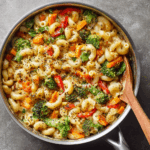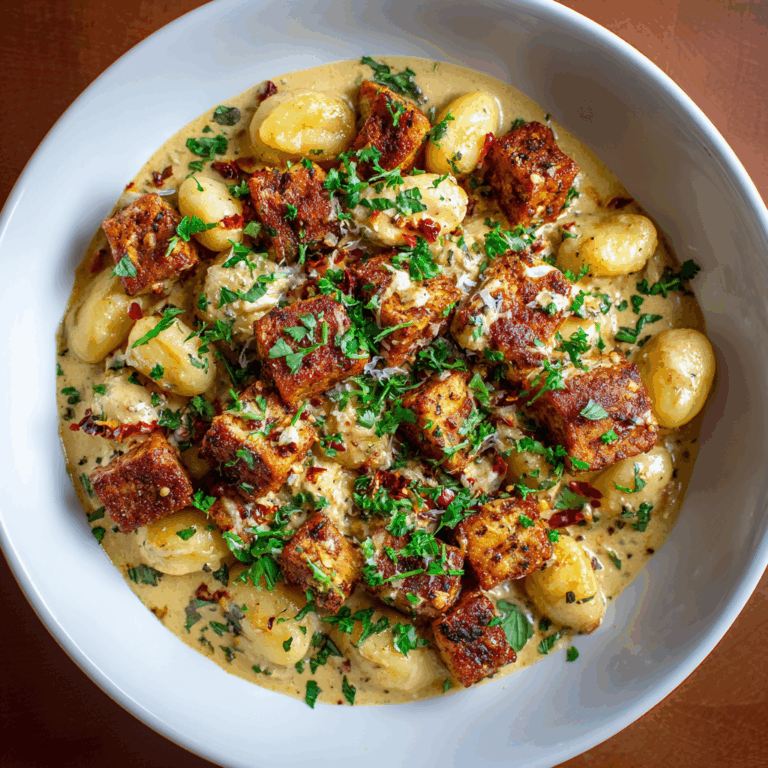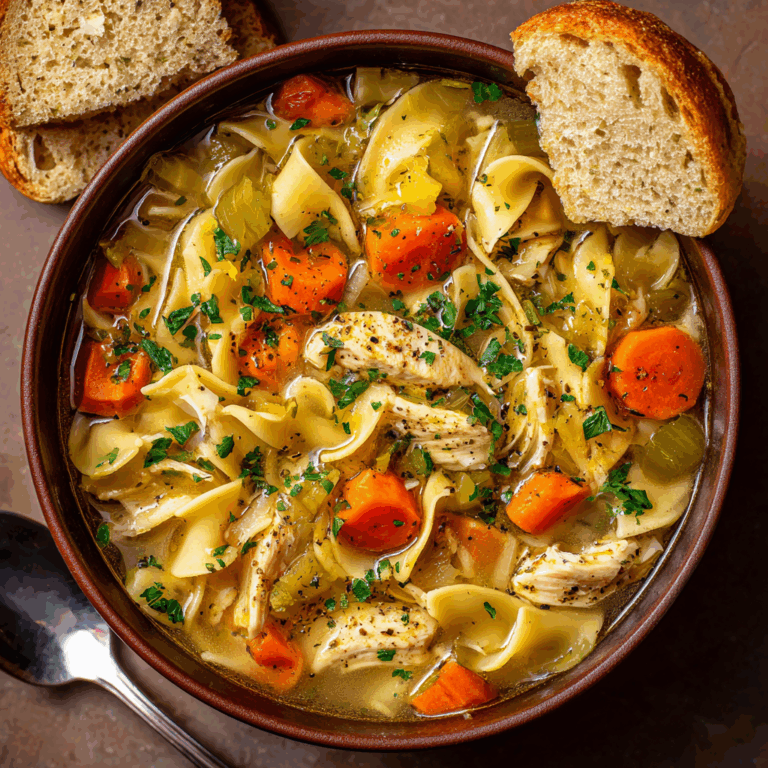The Ultimate Guide to One Pot Veggie Mac and Cheese: Comfort Food, Perfected
There are few dishes in the culinary universe that hold the same universal, soul-warming appeal as a perfect bowl of mac and cheese. It’s a hug in a bowl, a nostalgic trip to childhood, and the ultimate comfort food. But let’s be honest: as much as we love the classic version, sometimes we crave that creamy, cheesy goodness without the heaviness, and with a bit more nutritional oomph. And what about the dreaded pile of pots, pans, and colanders left in the wake of its creation? Enter the hero of our story, the weeknight warrior, the solution to all these dilemmas: One Pot Veggie Mac and Cheese.
This isn’t just a recipe; it’s a revelation. It’s a promise of creamy, decadent pasta enveloped in a velvety cheese sauce, packed with vibrant, wholesome vegetables, and all made in a single pot. Yes, you read that correctly. One pot. From sautéing the veggies to cooking the pasta to creating the sauce, every step happens in the same vessel. This means maximum flavor, minimal cleanup, and a meal that’s on the table in about 25 minutes. In this ultimate guide, we will dive deep into the art and science of creating the perfect One Pot Veggie Mac and Cheese. We’ll explore its benefits, deconstruct the ingredients, provide a foolproof step-by-step method, and unlock a world of variations to keep this dish exciting for years to come.
Why One Pot Veggie Mac and Cheese is a Game-Changer
Before we get to the “how,” let’s fully appreciate the “why.” The concept of One Pot Veggie Mac and Cheese is brilliant for so many reasons, making it a staple for busy families, students, and anyone who loves good food but hates a messy kitchen.
1. The Unbeatable Convenience of One-Pot Cooking
The most obvious benefit is the dramatic reduction in cleanup. Traditional mac and cheese requires a pot for boiling pasta, a colander for draining, and a separate saucepan for the cheese sauce. This recipe elegantly streamlines the process. By cooking the pasta directly in the broth and milk, the starches released from the pasta thicken the liquid naturally, creating a sauce base that beautifully embraces the cheese. This method not only saves you from washing multiple items but also results in a sauce that clings to the pasta far better than any separately made sauce could.
2. A Nutritional Powerhouse in Disguise
The “Veggie” in One Pot Veggie Mac and Cheese is what transforms this from a simple comfort food into a well-rounded meal. You are seamlessly incorporating essential vitamins, minerals, and fiber into a dish that even the pickiest eaters will adore. It’s a fantastic strategy for getting more vegetables into your diet and reducing food waste by using up whatever you have lingering in the crisper drawer.
3. Incredible Customizability
This recipe is less of a rigid formula and more of a template for creativity. Don’t have broccoli? Use peas and carrots. Not a fan of cheddar? Try Gruyère or Monterey Jack. Need it to be vegan? Easily done! The adaptability of One Pot Veggie Mac and Cheese means you can make it a dozen times and never have the exact same dish twice. We will explore a vast array of variations later in this guide.
4. Speed and Efficiency for Modern Lifestyles
With a total time of just 25 minutes from start to finish, this dish is a lifesaver on busy weeknights. The active prep time is minimal, and because everything cooks together, you’re not juggling multiple elements on the stove. It’s the perfect answer to the eternal question, “What’s for dinner?” when time and energy are in short supply.
Deconstructing the Ingredients: The Science of Flavor and Texture
Every ingredient in our One Pot Veggie Mac and Cheese recipe plays a specific role. Understanding these roles will empower you to make successful substitutions and troubleshoot any issues.
The Pasta: The Foundation
-
Elbow Macaroni: The classic choice. Its small, curved shape is ideal for trapping the creamy sauce. The cooking time is perfectly aligned with the one-pot method.
-
Starch is Your Friend: This is a critical point. The starch that leaches out of the pasta during cooking is what naturally thickens the sauce. This is why you should not rinse the pasta! That starchy water is liquid gold for a creamy sauce.
-
Alternative Pasta Shapes: You can use other small shapes like cavatappi, shells, rotini, or penne. Just be mindful of the cooking time listed on the package, as it may need slight adjustment.
The Liquid: Building the Sauce Base
-
Vegetable Broth vs. Water: Using vegetable broth instead of water is the single biggest upgrade you can make for flavor. The broth infuses the pasta and vegetables with a savory, umami-rich depth from the very beginning. Water will work in a pinch, but the final dish will be noticeably less complex.
-
The Ratio is Key: The ratio of liquid to pasta is crucial. Too little liquid, and the pasta will be undercooked and stick to the pot. Too much liquid, and you’ll end up with a soupy sauce. Our tested ratio of 4 cups of liquid to 2 cups of pasta is a great starting point, but factors like pot size and heat intensity can cause slight variations.
The Vegetables: Color, Nutrition, and Texture
The “veggie” component is where you can truly make this One Pot Veggie Mac and Cheese your own. Here’s a breakdown of vegetables by cooking time, which is essential for getting everything perfectly tender-crisp.
-
Hard Vegetables (add at the beginning with sautéing): These need more time to cook. Examples include diced carrots, broccoli florets, cauliflower, bell peppers, and onions.
-
Medium Vegetables (add halfway through pasta cooking): These cook a bit faster. Think: zucchini, yellow squash, or green beans.
-
Soft/Learfy Vegetables (stir in at the very end): These require just residual heat to wilt. Spinach, kale, arugula, and frozen peas fall into this category. Adding them last preserves their bright color and delicate texture.
The Cheese: The Star of the Show
-
The Magic of Shredding Your Own: Pre-shredded cheese is convenient, but it’s often coated with anti-caking agents like potato starch or cellulose. These coatings can prevent the cheese from melting smoothly, leading to a grainy or slightly clumpy sauce. For the silkiest, dreamiest sauce, take the extra minute to shred a block of cheese yourself.
-
Best Melting Cheeses for One Pot Veggie Mac and Cheese:
-
Cheddar: The classic. Offers a sharp, tangy flavor. Use mild, medium, or sharp based on your preference.
-
Monterey Jack: Excellent melting properties with a mild, buttery flavor. Perfect for combining with other cheeses.
-
Gruyère: A Swiss cheese with a nutty, slightly salty flavor that adds incredible sophistication.
-
Fontina: Buttery and earthy, melts into a wonderfully creamy pool.
-
Gouda (young): Mild and creamy, another great melter.
-
-
The Cheese Blends: A combination of cheeses often yields the best results. Try a mix of sharp cheddar for flavor and Monterey Jack for meltability.
The Aromatics and Seasonings: The Flavor Amplifiers
-
Olive Oil: Used for sautéing the initial vegetables, building a flavor base.
-
Garlic Powder vs. Fresh Garlic: Garlic powder distributes its flavor evenly throughout the dish without the risk of burning. If you prefer fresh garlic, mince it finely and add it to the pot for the last 30 seconds of sautéing the veggies to avoid bitterness.
-
Salt and Pepper: Season in layers. The broth will add salt, so taste before adding more at the end.
-
Optional Spices: This is where you can get creative. Paprika adds a smoky warmth, a pinch of cayenne brings subtle heat, Italian seasoning introduces herbal notes, and a dash of mustard powder (a classic mac and cheese secret ingredient) enhances the cheesiness.
The Foolproof, Step-by-Step Recipe for Perfect One Pot Veggie Mac and Cheese
Now, let’s get to the heart of the matter. Here is the detailed, walk-through version of the recipe, designed to ensure your success every single time.
One Pot Veggie Mac and Cheese
-
Prep Time: 10 minutes
-
Cook Time: 15 minutes
-
Total Time: 25 minutes
-
Course: Main Course
-
Cuisine: American
-
Servings: 4
-
Calories: Approximately 400 kcal
Ingredients
-
2 cups elbow macaroni (or pasta of your choice)
-
4 cups vegetable broth (or water, but broth is highly recommended)
-
1 cup mixed vegetables (e.g., broccoli florets, diced bell peppers, spinach)
-
2 cups shredded cheese (cheddar, Monterey Jack, or a blend)
-
1 tablespoon olive oil
-
1 teaspoon garlic powder
-
Salt and freshly ground black pepper, to taste
-
Optional: ½ teaspoon paprika, a pinch of cayenne, or 1 teaspoon Italian seasoning
Instructions
Step 1: Sauté the Veggies – Building the Flavor Foundation
Place your large pot or Dutch oven over medium heat. Add the tablespoon of olive oil. Once the oil shimmers, add your harder, longer-cooking vegetables (like broccoli and bell peppers). Sauté them for 3-4 minutes, stirring occasionally, until they just begin to soften and become fragrant. This step is not about fully cooking them; it’s about awakening their flavors and giving them a head start. If you’re using any aromatics like finely diced onion, this is the time to add them.
Step 2: Add Pasta and Broth – The One-Pot Magic Begins
Now, stir in the 2 cups of dry elbow macaroni, ensuring the pasta gets coated in the oil and toasted slightly with the veggies. This toasting step can add a lovely nutty flavor. Next, carefully pour in the 4 cups of vegetable broth. Use a wooden spoon to scrape up any browned bits from the bottom of the pot – that’s pure flavor! Add the garlic powder and any other dry spices (paprika, etc.) at this stage. Increase the heat to high and bring the mixture to a rolling boil.
Step 3: Cook the Pasta – The Simmering Transformation
Once the pot is boiling, immediately reduce the heat to low or medium-low to maintain a steady simmer. Cover the pot with a lid. This is crucial as it traps the steam, helping to cook the pasta evenly and preventing too much liquid from evaporating too quickly. Let it simmer for 8-10 minutes, but don’t just walk away! Stir it every 2-3 minutes. This prevents the pasta from sticking to the bottom of the pot. Cook until the pasta is al dente (tender but still with a slight bite) and most of the liquid has been absorbed. You should have a thin, starchy liquid remaining; this will form the base of your sauce. If the pasta isn’t quite done and the liquid is gone, add a splash more broth or water. Conversely, if the pasta is done but there’s a lot of liquid, simmer for another minute or two uncovered.
Step 4: Incorporate the Cheese – The Grand Finale
This step is important for a smooth sauce. Remove the pot from the heat entirely. Stirring constantly, gradually add the 2 cups of shredded cheese. Adding the cheese off the heat prevents it from breaking or becoming oily. The residual heat is more than enough to melt it beautifully into the starchy liquid, creating a luxuriously creamy sauce. If the sauce seems too thick, stir in a splash of milk, cream, or a bit more broth until it reaches your desired consistency.
Step 5: Season to Taste – The Finishing Touch
Now, taste your creation! Season with salt and freshly ground black pepper as needed. Remember, the cheese and broth already contain salt, so go easy at first. This is also the time to stir in any delicate, quick-cooking vegetables like fresh spinach or frozen peas. The residual heat will wilt the spinach and thaw the peas perfectly.
Step 6: Serve and Enjoy!
Divide the One Pot Veggie Mac and Cheese into bowls immediately. It’s at its absolute peak when served hot and creamy. Enjoy the compliments, and, most importantly, enjoy the fact that you only have one pot to wash!
Mastering the Art: Pro Tips for the Best One Pot Veggie Mac and Cheese
-
Don’t Rush the Simmer: A gentle simmer is key. A raging boil can cause the liquid to evaporate too quickly, leaving you with undercooked pasta, and can make the sauce cloudy.
-
Stir, Stir, Stir: Regular stirring is non-negotiable in one-pot pasta. It prevents sticking and ensures even cooking.
-
Let it Rest: After adding the cheese, let the pot sit for 2-3 minutes off the heat before serving. This allows the sauce to thicken slightly and the flavors to meld even further.
-
Cheese Sauce Too Thin? If your sauce is thinner than you’d like, you can create a quick slurry. Mix 1 teaspoon of cornstarch with 1 tablespoon of cold milk or water. Stir this into the mac and cheese and return it to low heat for a minute, stirring until thickened.
-
Reheating Like a Pro: Leftovers will thicken in the fridge. Reheat gently on the stove over low heat, adding a splash of milk or broth to bring back the creamy consistency. Microwave reheating can be uneven and may cause the cheese sauce to separate.
A World of Variations: Endless Possibilities for Your One Pot Veggie Mac and Cheese
The basic recipe is a masterpiece, but the fun truly begins when you start customizing. Here are countless ideas to inspire your next pot.
Vegetable Variations:
-
Broccoli Cheddar Classic: The quintessential combo. Use all broccoli florets for a timeless favorite.
-
Sun-Dried Tomato and Spinach: Add ¼ cup of chopped sun-dried tomatoes (oil-packed, drained) with the broth and stir in 2 cups of fresh spinach at the end.
-
Mexican Fiesta: Use a blend of black beans, corn, and diced green chiles. Use a pepper Jack cheese and season with a teaspoon of chili powder and a pinch of cumin.
-
Tuscan Inspired: Stir in ½ cup of chopped marinated artichoke hearts and a handful of chopped kale at the end. Use an Italian cheese blend.
-
Everything but the Kitchen Sink: Use a frozen mixed vegetable blend (peas, carrots, corn, green beans) for ultimate ease.
Protein Add-Ins:
Transform your One Pot Veggie Mac and Cheese into an even heartier meal.
-
Plant-Based: A can of drained and rinsed chickpeas or white beans added with the broth.
-
For Vegetarians: Stir in ½ cup of grated Parmesan cheese at the end for extra umami.
-
For Omnivores: Diced cooked chicken, crumbled cooked sausage, or flaked canned tuna can be stirred in at the end just to heat through.
Global Flavor Twists:
-
Buffalo Style: Stir in ¼ cup of buffalo sauce with the cheese and top with crumbled blue cheese or ranch dressing.
-
Pesto Swirl: Swirl in 2-3 tablespoons of basil pesto after adding the cheese.
-
Truffle Indulgence: Finish the dish with a drizzle of truffle oil and a sprinkle of truffle salt.
Dietary Adaptations:
-
Gluten-Free One Pot Veggie Mac and Cheese: Use your favorite gluten-free pasta. Be extra vigilant with stirring, as some GF pastas can be more prone to sticking.
-
Vegan One Pot Veggie Mac and Cheese: This is easily achievable!
-
Use vegan cheese that melts well (check reviews online).
-
For a creamier, more reliable sauce, replace 1 cup of the vegetable broth with 1 cup of unsweetened, unflavored plant-based milk (cashew or oat milk work best) and add 2 tablespoons of nutritional yeast for a “cheesy” flavor.
-
-
Dairy-Free (Non-Vegan): Follow the vegan adaptation but feel free to add in non-vegan protein like chicken.
The Ultimate Guide to One Pot Veggie Mac and Cheese: Comfort Food, Perfected
One-Pot Veggie Mac and Cheese is a creamy, comforting, and wholesome meal that’s perfect for busy weeknights. Packed with colorful vegetables and cheesy goodness, it combines convenience and nutrition in a single pot. This recipe is easy to customize with your favorite veggies and cheeses, making it a family-friendly dinner option.
Ingredients
-
2 cups elbow macaroni (or pasta of choice)
-
4 cups vegetable broth or water
-
1 cup mixed vegetables (e.g., broccoli, bell peppers, spinach)
-
2 cups shredded cheese (cheddar or vegan cheese)
-
1 tablespoon olive oil
-
1 teaspoon garlic powder
-
Salt and pepper, to taste
-
Optional spices: paprika or Italian seasoning
Instructions
-
Sauté the Veggies
Heat olive oil in a large pot over medium heat. Add mixed vegetables and sauté for 3–4 minutes until they start to soften. -
Add Pasta and Broth
Stir in the elbow macaroni and pour in the vegetable broth or water. Bring to a boil. -
Cook the Pasta
Reduce heat to a simmer, cover the pot, and cook for 8–10 minutes, stirring occasionally, until pasta is al dente and most of the liquid is absorbed. -
Incorporate the Cheese
Remove from heat and stir in shredded cheese until melted and creamy. For a thicker consistency, add a splash of milk or extra cheese as needed. -
Season to Taste
Add salt, pepper, and any optional spices. Mix well. -
Serve
Divide into bowls and enjoy immediately. Garnish with additional cheese, herbs, or breadcrumbs if desired.
Notes
-
Veggie Variations: Use any vegetables you have on hand—zucchini, peas, or carrots work well.
-
Cheese Options: Try a mix of cheddar, mozzarella, or pepper jack for different flavor profiles.
-
Creamier Texture: Stir in a splash of milk, cream, or a dollop of cream cheese for extra creaminess.
-
Meal Prep Friendly: Store leftovers in an airtight container in the fridge for up to 3 days; reheat with a splash of milk.
Nutrition
- Calories: 400 kcal per serving
- Sugar: 4g
- Fat: 18 g
- Saturated Fat: : 9 g
- Carbohydrates: 45 g
- Fiber: 5 g
- Protein: 18 g
The Final Word on One Pot Veggie Mac and Cheese
One Pot Veggie Mac and Cheese is more than just a recipe; it’s a smarter, healthier, and more efficient way to enjoy a beloved classic. It proves that comfort food doesn’t have to be complicated or time-consuming, and that nourishing your body and soul can happen in the same, single pot. It’s a dish that invites creativity, adapts to your needs, and consistently delivers satisfaction.
So, the next time you’re staring into the pantry, wondering what to make for dinner, remember this guide. Grab a pot, your favorite pasta, some colorful vegetables, and a good block of cheese. In 25 minutes, you’ll have a steaming, creamy, cheesy, and utterly delicious meal that will have everyone asking for seconds. And you’ll have the supreme satisfaction of knowing that the cleanup will be a breeze. Happy cooking







